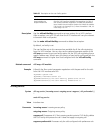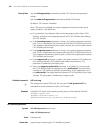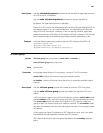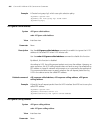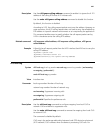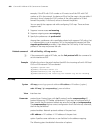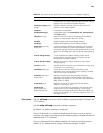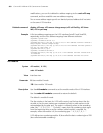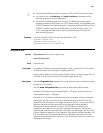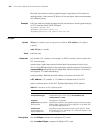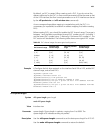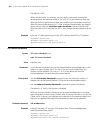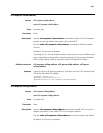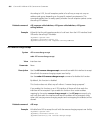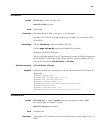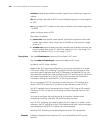
451
n
■ The packet numbering mode on the pair of DTE and DCE must be the same
■ You need to run the shutdown and undo shutdown commands on the
interface to apply the new configuration.
■ The packet numbering mode of X.25 Layer 3 is different from the frame
numbering mode of LAPB (Layer 2 in X.25). When modulo 128 is applied to the
DTE/DCE interface with high throughput, it improves only the efficiency of local
DTE/DCE interface (point-to-point efficiency) for LAPB; while for Layer 3 in
X.25, it improves the efficiency of the two communicating DTE peers (or
peer-to-peer efficiency).
Example # Set the modulo on the X.25 interface Serial 2/0 to 128.
<Sysname> system-view
[Sysname] interface serial 2/0
[Sysname-Serial2/0] x25 modulo 128
x25 packet-size
Syntax x25 packet-size input-packet output-packet
undo x25 packet-size
View Interface view
Parameter input-packet: Maximum input packet length in bytes, ranging from 16 (inclusive)
to 4096 (inclusive) and must be the integer power of 2.
output-packet: Maximum output packet length in bytes, its value ranges from 16
(inclusive) to 4096 (inclusive) and must be the integer power of 2.
Description Use the
x25 packet-size command to set the maximum input and output packet
lengths of X.25 interface.
Use the
undo x25 packet-size command to restore their default values.
By default, the maximum input packet length is 128 bytes, and the maximum
output packet length is 128 bytes.
Normally, an X.25 packet-switching network has a limitation of the transmission
packet size, and the maximum size of a data packet sent by the DTE shall not
exceed this size (otherwise it will trigger the reset of the VC). In this way, the DTE
devices at sending end and receiving end are required to have datagram
fragmentation and reassembly functions. The DTE device at sending end
fragments the datagram with a length exceeding the maximum transmission
packet length based on the maximum transmission packet length, and sets M bit
in other fragments except the final fragment. After receiving these fragments, the
DTE at receiving end will reassemble them to a datagram and submit it to the
upper-layer protocol based on the M bit. Consult access ISP about this maximum
receiving packet length.



